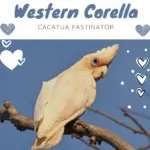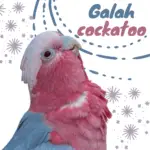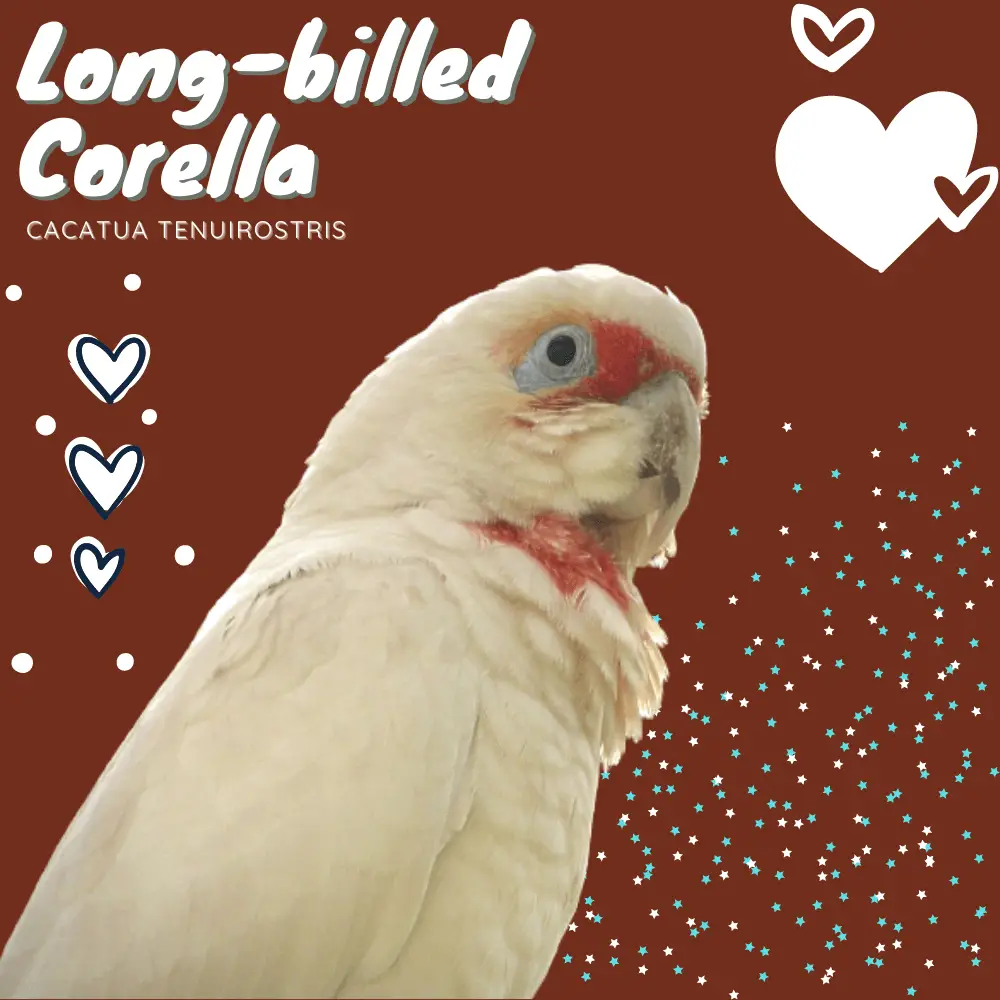
Long-billed Corella (Cacatua tenuirostris) 37–40 cm; 500–600 g. Mostly white, with a small 33–34 mm crest; lores, and forehead orange-scarlet, with a scarlet band across the throat;
underwing and under tail tinged yellow; bill bone-colored, long (42–53 mm) and slender; eye dark brown with large blue periophthalmic ring. Sexes similar.
The scarlet band across the throat distinguishes from both C. pastinator and C. sanguinea. Juvenile has a shorter bill and less orange-scarlet.
- LC Least Concern
- Names (15)
- Monotypic
Systematics History
Formerly considered conspecific with C. pastinator, incorporating C. sanguinea; on current evidence, the three forms are probably best considered to constitute three separate species. Monotypic.
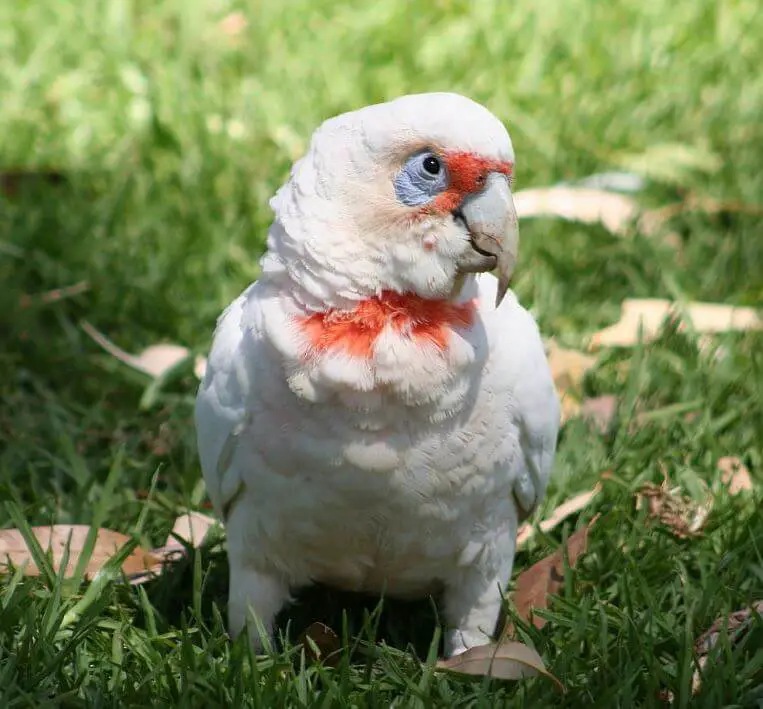
Long-billed Corella
Subspecies
Monotypic.
Life with a cockatoo! | some fun with my long billed corella Gordon
SOURCE: CRAIGS CRAZY FLOCK
Distribution
Long-billed Corella: Riverina of SC New South Wales S to S Victoria and SE South Australia.
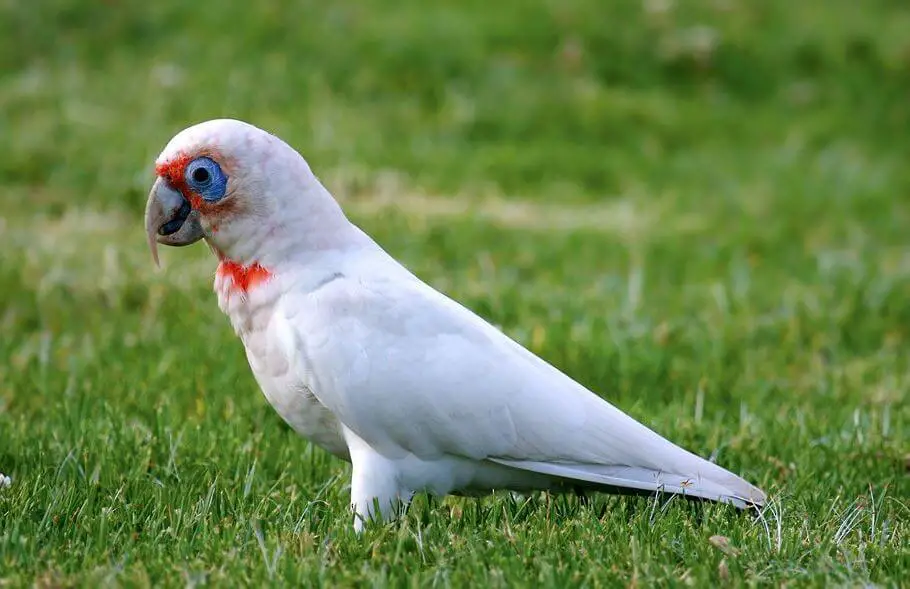
Habitat
Grassy eucalypt woodland (Eucalyptus camaldulensis, E. fasciculosa, E. ovata, E. melliodora, E. microcarpa) and grassland, where annual rainfall is 250–800 mm, mainly in winter.
Movement
Resighting of individually wing-tagged birds showed that species do not travel long distances; 85% of all such resightings were within 5 km of the capture site, while the longest movement was 77 km.
The mean size of large feeding flocks varied with time of year and available food sources, from 419 (sunflower) to 122 (pasture).
Long-billed Corella Diet

What do corellas eat
Uses specialized bill to dig up underground storage organs of a variety of native plants, many of which have now become rare; Long-billed Corella(Cacatua tenuirostris) now commonly eat two species of introduced onion grass (Romulea) and a variety of cereal crops; they also take grain from standing crops or from the ground.
Since the 1960s, they have begun feeding on sunflower (Helianthus annuus), a new crop for the district, available in autumn and winter, which is normally a time of food shortage. Recorded feeding on insect larvae.
Sounds and Vocal Behavior
Flight call is a nasal bisyllabic or trisyllabic “ke-wheh” or “ke-re-weh”, the latter typically slightly higher-pitched (and higher than C. sanguinea). Alarm calls include loud screeches and braying sounds.
Breeding
Laying Jul–Oct. Nest is decaying wood at bottom of tree hollow up to 25 m above ground. Several pairs may nest in one tree, in separate hollows.
Usually 2–3 eggs (1–4); incubation 24 days, by both parents; chick has sparse pale yellow down; nestlings remain in the hollow 55–60 days; fed by parents in hollow, and then for a further 3 weeks after fledging. In exceptionally favorable years, species may breed twice.
Conservation Status
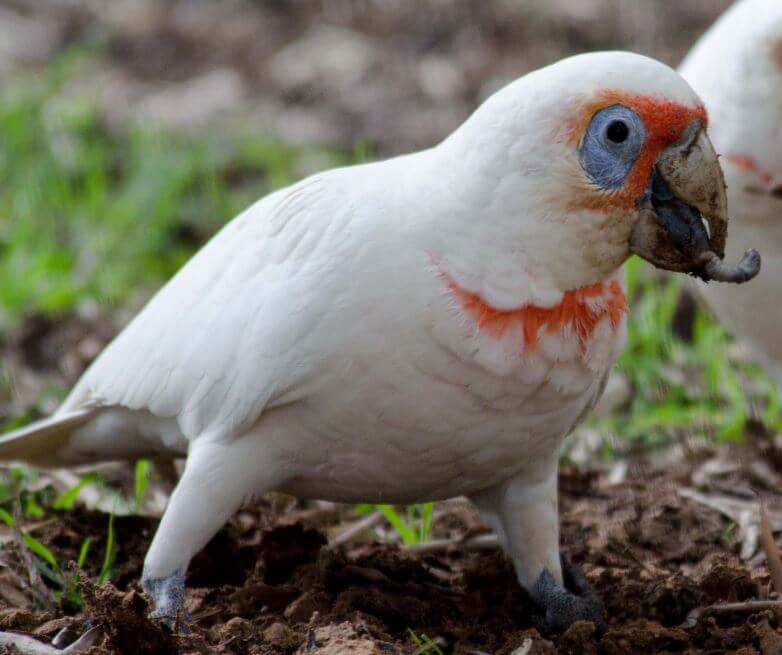
Conservation status on BirdlifeLC Least Concern
Not globally threatened. CITES II. Currently secure; species continues to expand its distribution and is even afforded pest status in some areas. Future concern over the availability of nest hollows is serious, as it is with most cockatoos.
Corellas were abundant before European settlement and thrived (as did Aborigines) on large quantities of a native daisy, murong (Microseris lanceolata), which has a rich underground tuber.
After 1837, pastoralists took up most of the Riverina for sheep grazing, and plants like murong became rare, to be replaced by non-tuberous introduced grasses and clovers;
Long-billed Corella fed on cereal crops and was shot and poisoned so that by the 1860s they had become rare in some places; degradation of native vegetation by rabbits late in the 19th century probably accelerated the decline of this population.
However, the decline was suddenly reversed in the 1950s, possibly because numbers of rabbits declined following the introduction of myxomatosis as a control agent;
besides relieving competition, this also removed the need to poison rabbits, for which grain bait had often been used, with corellas being non-target victims. Recently established in Tasmania, where origins of population uncertain.

